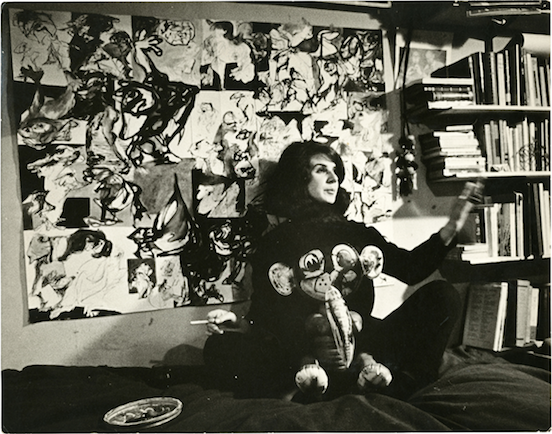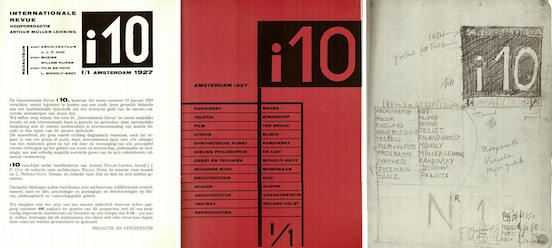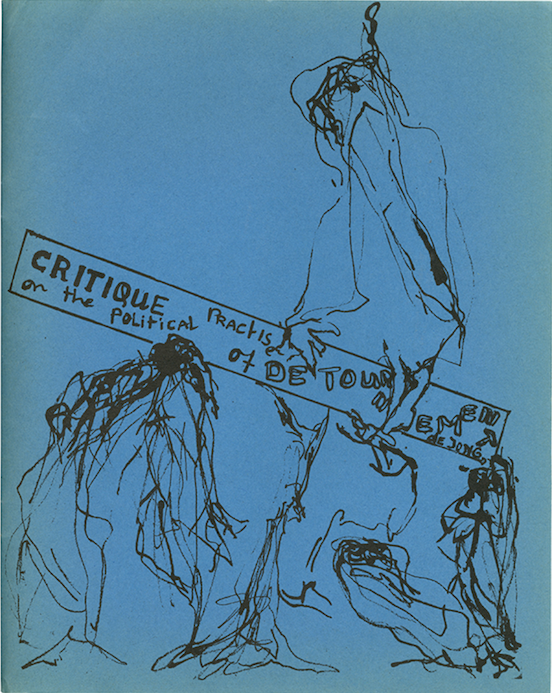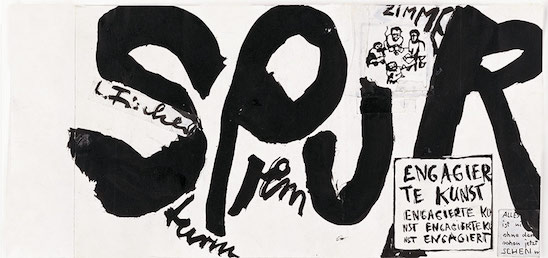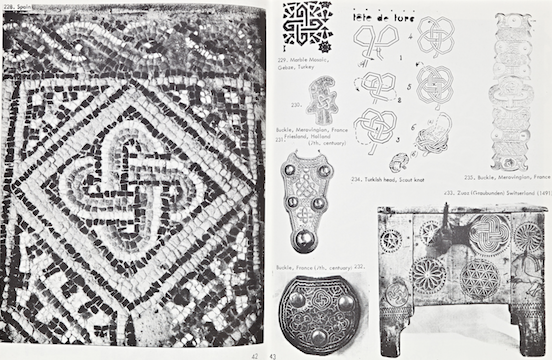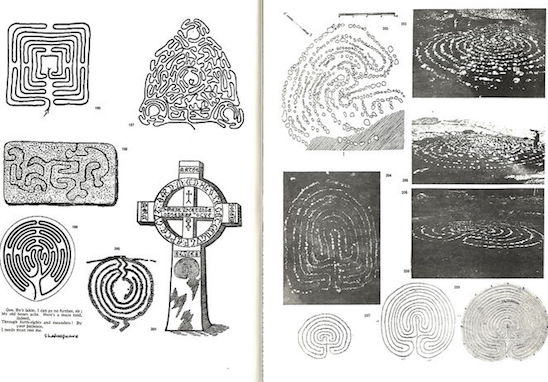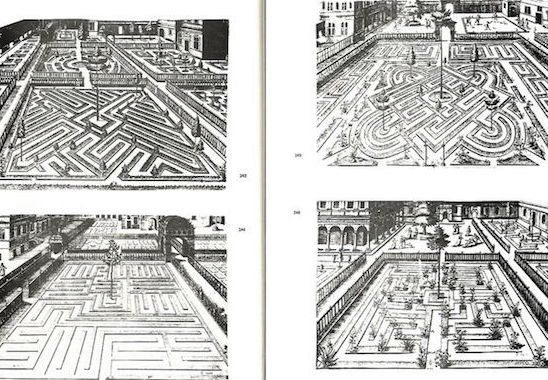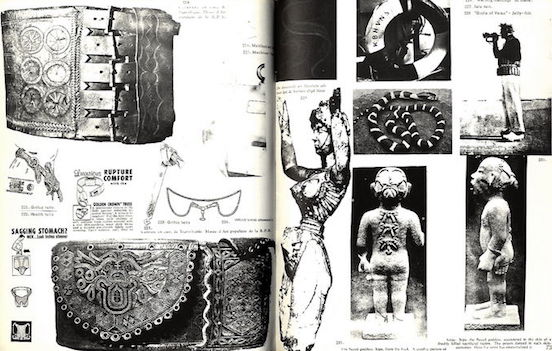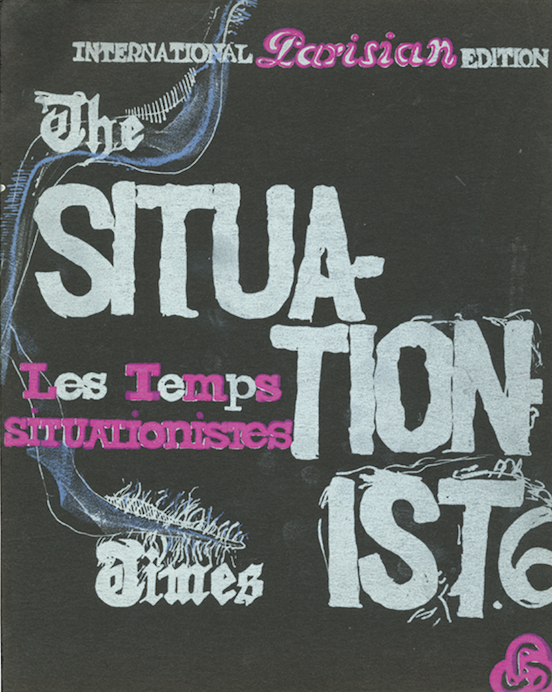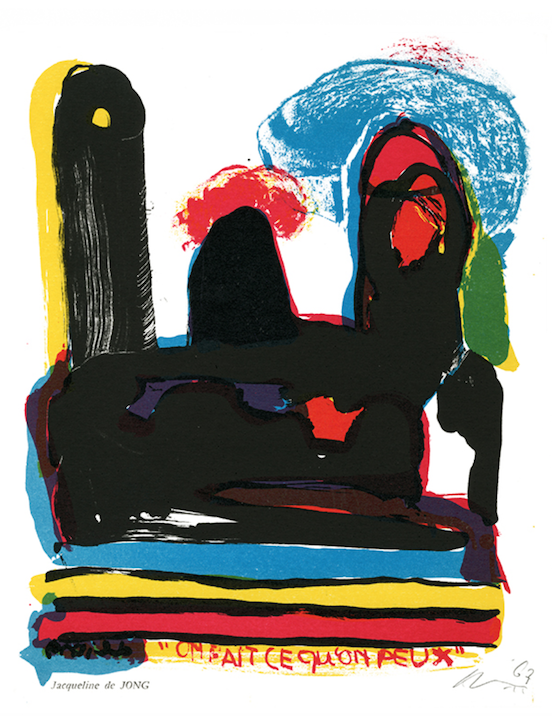With this article I will try to provide the reader a good insight into the Situationist Times that were published between 1st of May 1962 and the Fall 1967 during the Situationist movement [ x /y ].
First of all, about the woman behind these tremendously enriching compendia:
Her name is Jacqueline de Jong, she is a dutch graphic designer, artist and sculptor, born in 1939 in Hengelo to Jewish parents.
She encountered Asger Jorn in 1959 in London, which will lead to a very significant liaison and finally to her entrance into the Situationist International.
1960, when she entered the movement she then started to participate in conferences at the Central Committee and was the representative of Holland – in the same year she received a postcard with the message :”Now all of Holland belongs to you.”[z]
This stamped her membership of the SI where she remained active until 1962, when in the same year the German and Scandinavian Situationists saw expulsion by Guy Debord due to a long-standing friction between the aesthetic and political aspects. Because of her solidarity with the German Situationist Gruppe SPUR, she was expelled/ resigned in Febuary 1962.
As the division between the Debord circle and the German and Scandinavian Situationists widened, De Jong stayed impartial.
Her vision was to produce an international, completely free and multicultural magazine based on the most creative Situationist ideas.
De Jong’s major inspiration stemmed from the late 1920s magazine i10 International Revue published and edited by the anarchist Arthur Lehning between 1927-1929, it featured contributions from Schwitters, Moholy-Nagy, Bloch, Kandinsky and many others. The new approaches to typography and graphic design apart from the interest in radical political views were so compelling and intriguingly in synch with the aesthetic sensibilities of the avant-garde with which she traveled.
For her the idea of a magazine with content made up of an wide-array of artists and intellectuals beyond aesthetic and geographical constraints was appealing and aided her in attempts to find new ways of disseminating the Situationist ideology.
“How it started was getting thrown out of the Situationist movement. I had already announced that I was going to make an English — multi-language, but English language sort of magazine in 1960 in Brussels. And it was because of the French — Internationale Situationniste — I said : let’s make an English one. […]
There was SPUR — as a German one, a French, I.S., but no English language magazine for the Internationale Situationniste. So that was my suggestion, and I had bought i10, I think, a year before. And it was the most interesting magazine, I mean also in typography, I’d ever seen. […]”
The first two issues speak a very similar visual language, with drawings and articles. The first issue she started with the whole SPUR trial while they were on trial in Germany for blasphemy and pornography — she published the whole court process in this issue, including the so-called dirty pictures and blasphemic texts.
They would travel to places and protocol their results of applying Situationist tactics as détournement and dérive.
The following issues are quite different, as De Jong found herself very captivated by the concept of topology, she would compile visual information and material in a very meticulous research on various subjects, with the highly diverse contributions in form of highly informative texts – also in different languages, or even various languages in one cohesive article.
The issue that started this whole idea of compiling visual material throughout time and culture was the third issue — the British Issue which she entirely by herself edited and published.
Apart from few highly interesting and profound texts by Anton Ehrenzweig, Max Bucaille and Georges Hay this issue mostly concentrated on the ‘Typologoy of Knots’.
De Jong did not intend to make a series of issues with topological content, but what happened was that she solely recognized the topological pattern that was developing, but where she drew inspiration for the Issue #3 was from walking the Gotland labyrinths.
She described her experience:
I don’t really remember why I took the idea of labyrinths. It might have been because we went to the Gotland. We walked into the labyrinth there. And out. That’s the problem. Into a labyrinth is one thing, but getting out of it.. but there’s always a system to it. […]
Which led her to publishing this extraordinary content on labyrinths, she asked the people in her network, such as her former history professor Jaffé and Aldo van Eyck to write an article on this subject. Simultaneously Peter Schat and Lodewijk de Boer changed the name of their opera from ‘The Paradise Bird’ to ‘Labyrint’.
Issue #5 provided an enormous amount of visual and verbal content on ‘Rings and Chains’, which was the logical development of sequences, and again people were asked to contribute to this specific subject.
But this was also the starting point of the publishing and distributions to take a critical turn. Jorn had to sell some of his paintings for the publishing to take place, there were problems with the printing office after which they relocated to Copenhagen for Issue #5.
This cohesive way of content focusing on a certain topological subject started turning into a maniacal hunt for De Jong, she initially wanted to do an issue on Wheels, but due to certain other coincidental situations she changed her course, this time inspired by Walasse Ting‘s One Cent Life she advanced to compiling a very visually different issue, which will finally lead to being the last one.
One Cent Life was a book featuring lithographs and screenprints contributed by artists such as Pierre Alechinsky, Karel Appel, Asger Jorn, Roy Liechtenstein, Allan Kaprow, Andy Warhol, and many more.
“Lots of things were happening, actually at the American Center. Happenings were starting. Yoko Ono came and we were all very much involved in movements that got more and more international. We did some things like parties and exhibitions, and I mean really working together, having enourmous shows together and I mean it became lively, it became really something important.
JACQUELINE DE JONG : THE SITUATIONIST TIMES #6
FACSIMILE 1962-67, CURATED BY JOHAN KUGELBERG, PUBLISHED BY BOO-HOORAY NYC, 2012
Rietveld Library no: 700.2 jon 1
I wanted to show this spirit in a printed way. […] I wanted to do something cheap, but beautiful, and perfect. I said I could make a Parisian One Cent Life, and very cheap, if all the artists do the same colors, the same size, and it’s the size of the Situationist Times. […]”
She went to a lithographer, and many artists were asked to work on this issue, come four times to the printer and make four colors. What also was part of her considerations was the fact that this issue was meant to cover the costs of the next issue, she didn’t want to depend on Jorn selling his paintings.
It was published finally, and it was unique. It was shown at La Hune, which was a bookshop for art and it peaked its distribution, unfortunately to very complicated and shady reasons the publishing of The Situationist Times was put to a halt by outside circumstances which I find very tragic in that sense.
I feel like she could have gone on with this process of working with collaboraters and contributors from all different backgrounds specialized in a certain field and enriched society with this knowledge made accessible to the reader in such a visually magnificient way – if it wasn’t for those outside circumstances that she had little control of.
But then again I wonder if exactly the way things turned out created the emphasis of this compilation of knowledge and visual manifestation of that time’s zeitgeist, giving it more significance, but also compelling me to wonder about the what ifs, or what would an issue on a different topic that I personally find quite interesting have been like? Because I find it quite striking in her way of compiling especially the topological issues, she crossed borders and cultures and time, which really caught my interest, and I almost want to argue that it was accidental because in a way she possibly just wanted to provide the most accurate and rich information on a certain topic with contributions from other people she dragged into this quest.
In that sense, her ambitious hard work and struggles to give us this content and share it with the world and people like us from a different time and mental state is solely, and tremendously enriching, but highly questionable if these were aspects of her consideration. The way I perceived it she solely wanted to share something of the present in the present, but in such an eager and energetic way that I can feel the literal energy of De Jong when I flip through the pages of each issue, the dedication and meticulous arrangement.
I highly advise the reader to go to the library of our academy and let the visual language speak to you. I derived profound inspiration from it – the way of the arrangement and editing, visually as written, concomitant the content itself as well of course.
The International Situationist Times facsimilé edition at Rietveld Library cat.no. 700.2 jon 1
